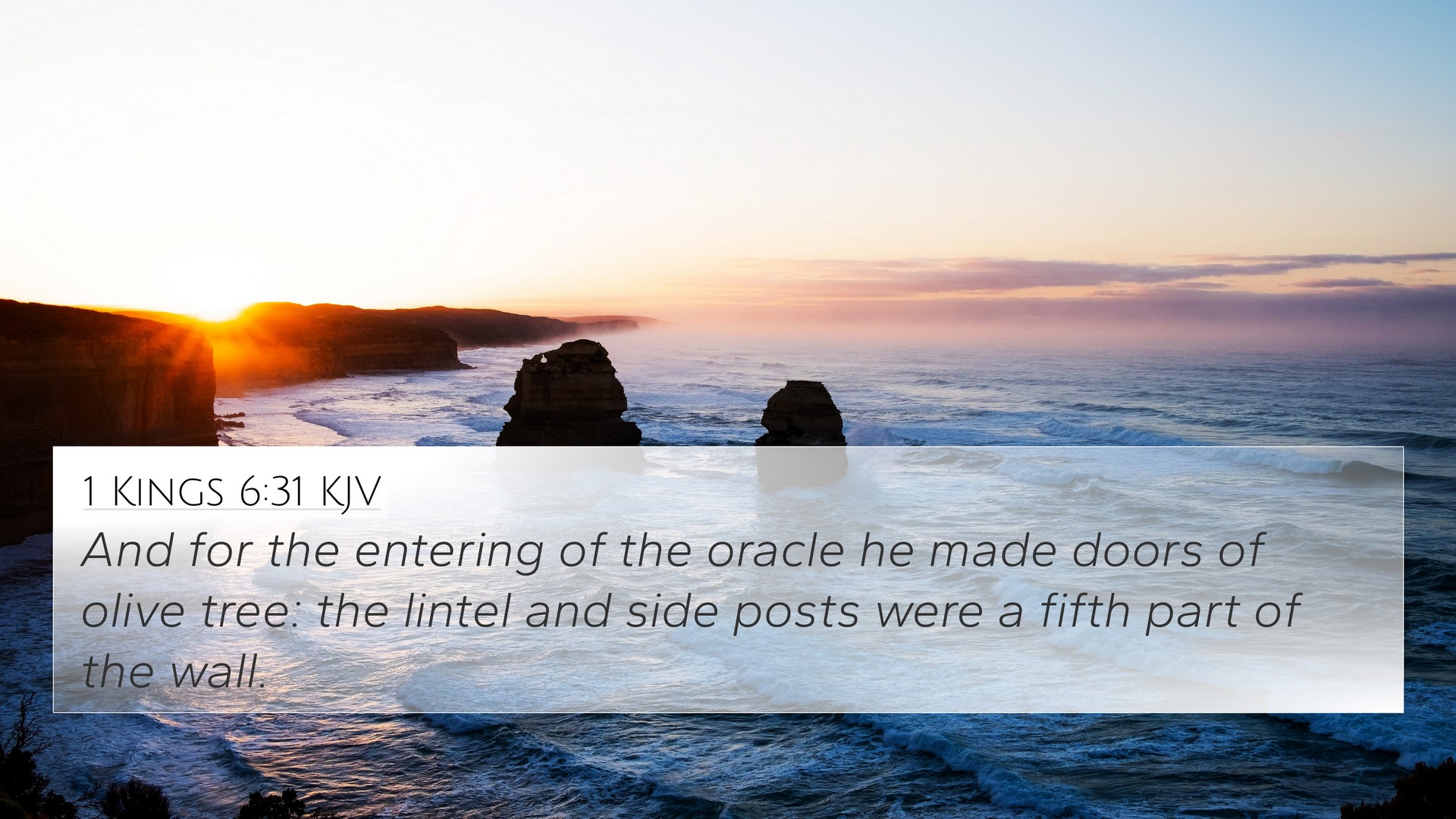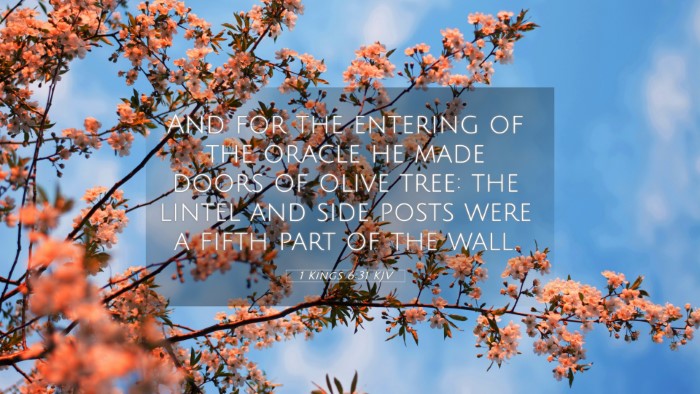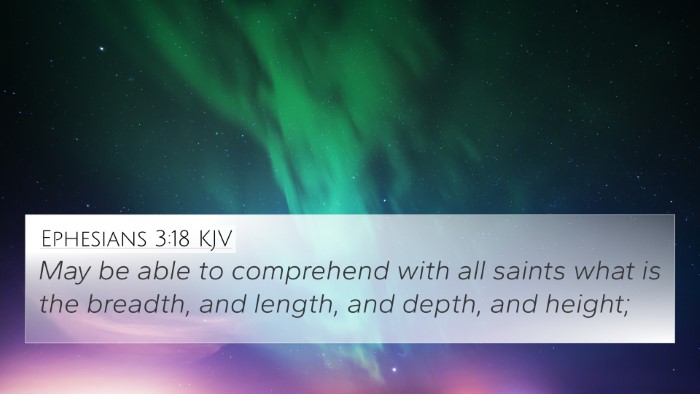Understanding 1 Kings 6:31
The verse 1 Kings 6:31 states: "And for the entering of the oracle he made doors of olive tree; the lintel and side posts were a fifth part of the wall."
This passage describes the elaborate craftsmanship involved in constructing the temple of Solomon, particularly the entrance to the holy of holies, known as the oracle. Through insights gained from public domain commentaries by Matthew Henry, Albert Barnes, and Adam Clarke, we can extract deeper meanings from this text.
Commentary Insights
Matthew Henry's Commentary
Matthew Henry emphasizes the significance of the materials used, indicating that the use of olive wood reflects both the beauty and durability expected in God's house. The craftsmanship signifies divine standards and the importance of reverence in places of worship. Henry also points to the symbolic meaning associated with powerful, majestic doors, which set apart the sacredness of the oracle.
Albert Barnes' Commentary
Albert Barnes remarks that the details concerning the doors represent a unique architectural feature significant for both its aesthetic beauty and its functional importance. The mention of the lintel and side posts being a fifth part of the wall suggests a larger context of precision in construction, reflecting God's order and structure in worship spaces. The olive wood is also a symbol of peace and endurance, vital characteristics of God’s promise to His people.
Adam Clarke's Commentary
Adam Clarke further elaborates on the design features of the temple, discussing variations in building styles and the implications of these designs on the understanding of God's holiness. He notes that the ornate reflecting of God's glory is illustrated through such architectural details. The careful planning in arranging the oracle's entrance shows the care God took in preparing a dwelling place among His people, offering profound theological significance.
Thematic Connections
The verse ties into larger biblical themes surrounding holiness, reverence, and worship. The construction of the temple goes beyond mere physical structure; it represents a central place for God's presence among His people. It addresses the fundamental concepts of divine order and the necessity of maintaining sanctity in worship.
Related Bible Verse Cross-References
- Exodus 25:10-22 - Instructions given for the Ark of the Covenant and the mercy seat highlight the significance of God’s presence.
- 1 Chronicles 28:11-12 - The detailed plans for the temple, indicating David’s preparation work, reflect the importance of divine architecture.
- Isaiah 66:1-2 - The Lord’s dwelling is not confined to man-made structures, emphasizing that God’s presence is transcendent.
- Hebrews 9:1-5 - The comparison of the earthly tabernacle and the heavenly reality, showing the significance of the temple layout.
- Matthew 21:12-13 - Jesus cleansing the temple signifies the importance of holiness in places of worship.
- Psalm 22:3 - God inhabiting the praises of His people showcases the necessary relationship of worship in the temple context.
- Revelation 21:22 - Discusses the New Jerusalem, reflecting the ultimate fulfillment of God’s presence among His people.
Applications and Insights for Study
For those seeking to delve deeper into the Bible and its teachings, this verse provides a gateway for cross-referencing other scriptures. Understanding the intricate design and purpose of the temple can lead to insightful studies about God's intention for worship, both in historical and contemporary contexts. Utilization of tools for Bible cross-referencing, such as concordances and reference guides, can illuminate relationships between various biblical texts, revealing the interconnectedness of God's message throughout scripture.
How to Use Bible Cross-References
Engaging in a cross-reference Bible study involves identifying themes and linked verses that complement each other. By evaluating different aspects of the Temple's significance in both the Old and New Testaments, you can uncover deeper truths within the scriptures. For example, studying the design and purpose of the temple (1 Kings 6:31), alongside Jesus' teachings on the sanctity of worship spaces, can yield a rich understanding of the continuity in the message of holiness.






